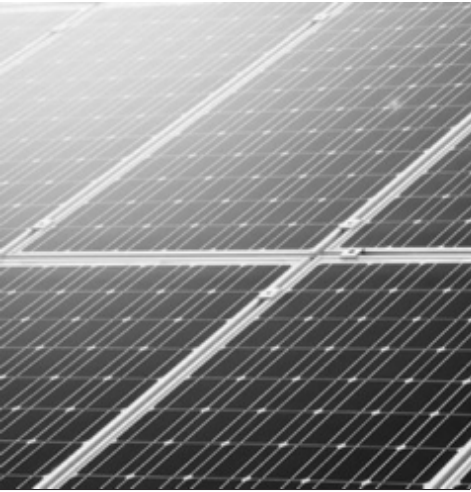The Rooftop Revolution in Vanuatu
June 30, 2023 12:37 am | Posted in Features | Share now TwitterFacebook

The National Energy Roadmap of Vanuatu was launched in 2013 by the Vanuatu Government
The overall vision of the 2013 version of the National Energy Road Map (NERM) was to energize Vanuatu’s growth and development through the provision of secure, affordable, widely accessible, high-quality, clean energy services for an educated, healthy, and wealthy nation. Vanuatu’s NERM was first endorsed by the Council of Ministers in 2013. At that time, the NERM identified five priorities for the energy sector: access, petroleum supply, affordability, energy security, and climate change. The roadmap was updated in 2016.
The current state of Solar in the World
In the International Energy Agency’s World Energy Outlook 2020, which was published in October 2020, it was announced that.
“The world’s best solar power schemes now offer the “cheapest…electricity in history” with the technology cheaper than coal and gas in most major countries.”
From 1976 to 2019, the prices of Photo Voltaic Cells had fallen 99.6%. from $76.67 per watt in 1977 to $0.36 per watt. Since 2019, the prices have continued to drop

Swanson’s Law named after Richard Swanson, the founder of SunPower Corporation, a solar panel manufacturer observed that the price of solar photovoltaic modules tends to drop 20 percent for every doubling of cumulative shipped volume. At present rates, costs continue to go down by 75% about every 10 years. In addition to the falling prices of solar panels, developments in lithium battery technology has also contributed to the reduction in costs for power storage.
Rooftop Solar in Vanuatu
With the support of the Vanuatu govt and the lower capital investment costs to setup solar power it has become increasingly attractive for Rooftop Solar systems to be installed in Vanuatu. There are two main types of Rooftop Solar power systems that can be installed. Stand Alone Off-Grid systems and Grid Connect systems. All solar Panel Systems generate power from the sun. The main difference is that Off Grid Solar Systems are not connected to the UNELCO power grid. Instead, they allow owners to generate and store their power through the installation of Batteries. The main advantage of an OffGrid system is that power can be stored in batteries to be used at a later time when the sun is not shining. The falling prices of battery systems have made this option more and more attractive.
Grid Connect systems are systems that are connected to the electricity Grid. When there is excess demand for power, electricity is drawn from the grid to cover the shortfall. However, there are limitations as this system is best when installed in buildings that use the most power when the sun is shining and is therefore more suitable for commercial applications when the demand for power is aligned with power generation. When there is excess power generated from the system, there is the option for this to be fed back into the grid. In Vanuatu, grid connect systems have been installed without the possibility of feeding power back to the Grid. Hybrid Grid -Connect systems where batteries are installed are also an option.
At a recent launching of the Port Vila Central Market’s new solar power system the Minister for Climate Change, Ralph Regenvanu announced an upcoming battery power grid project. The proposal would be for the option of anyone having solar power at their individual homes and also being connected to the power grid network, with any excess power produced from individual solar power systems to be fed into the UNELCO power grid and stored in batteries for later use. Currently the URA, Utilities, and the Vanuatu government are working on a possible feedback scheme with a maximum size per site and a rate that can be allocated for any surplus power.
The Economics of Installing Solar
What is the Return on Investment ( ROI) or repayment period
The calculations are relatively straightforward when assessing the economics of an investment in Rooftop Solar systems. There are three variables
- The initial capital investment
- The current cost of Grid power
- The Power generation capability of the system
Grid Connect systems have become quite affordable in recent years. The price of each system can vary depending upon the quality of the panels, and inverters used and the warranty offered by the installer. What used to cost over VT3m 10 years ago for a 10kw system will now cost well under VT1m. Solar panels 10 years ago use to cost VT1,200 whereas today’s costs are around 50 – 70vt per watt. Off-Grid systems require batteries to store excess power that can be used at a later. The cost of Lithium battery systems varies between VT50 – 150 per watt of usable storage. This means that a complete 10kw Off Grid Hybrid system could be installed for well under VT2m.
According to their website UNELCO rates are currently as follows.
Base price
64.61 vatu/kWh
Small Domestic Consumers21.97 vatu /kWh up to 60kWh
Low Voltage use 56.21 vatu/kWh
Other low voltage users 78.18 vatu / kWh
High voltage users 45.23 vatu/kWh
The majority of users fall within the categories of Low Voltage. Using the base rate of 64.61 vatu / kWh it is quite easy to work out the economics. Power generation is affected by a number of variables. The amount of sunlight reaching the panels, how the panels are installed, and ongoing maintenance. Using the example of the 10kw Grid Connect system currently installed on the roof of the Daily Post, power generation is approximately 10mw per year. The amount of sunlight varies also during the time of the year with the winter periods having less sun. Any power generated will be power that is not drawn from the UNELCO grid which translates to direct cost savings.
The Direct Cost savings are therefore approximately 10mw X 64.61 vatu = 646,610 vatu per annum in cost savings. At the higher rate of 78.81 vatu, the savings would be even higher.
How do we Assess the financial viability of investing in Solar.
The easiest way to assess the financial viability is to work out the repayment period. This is how long it will take to recoup any investment in Solar by dividing the Capital investment by the direct cost savings in power.

Repayment Period = Capital Investment cost/(power generated per year X UNELCO rate)
Using the above example, the repayment period will be between 1.5 – 2 years, for a Grid Connect system that costs 1m vatu and generates 10mw per annum.
What about the Financing options
For some households, even an investment of 1m may be beyond their capabilities despite the clear financial benefits of investing in Solar but the savings in power far outweigh funding costs making it attractive and feasible for banks to provide finance. Using the above example of the Daily Post, power savings would be 646,610 vatu per year. Loan repayments with a 10% bank loan over a 5-year period for a capital investment of 1m vatu is approximately 255,000 vatu per year generating a positive cashflow of over 390,000 per year.
National Energy Road Map (NERM) 2016-2030 stipulates that by 2030, Vanuatu should move out from conventional energy sources and transition to more renewable and sustainable energy sources. Under this Roadmap, Vanuatu will be 100% green by 2030. With the current developments in solar technology and the backing of the Vanuatu Government in private sector investment into Rooftop Solar, we are closer than ever to achieving this objective.










